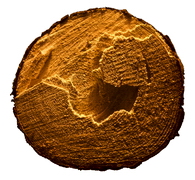|
History
|
For millennia, the growing of silk worms on mulberry trees and the making of raw silk had been well protected secrets of the Chinese.
But even after monks succeeded in the 6th century AC in bringing the silk worm over the Silk Road to Europe, still for long years the textile industry in Europe has not been able to cope with the rising demand for high value garments.
Over many centuries, all efforts failed to copy the nature’s secret of silk and to produce artificial silk in industrial quantities.
It was only at the end of the 19th century, when a patent application with the title “Künstliches, der Seide ähnliches Material” ("Artificial, Silk-Like Material") was filed in 1884. The creators had managed to dissolve cellulose – the main material of all organic fibers – from the leafs of a mulberry tree and to spin it into a yarn.
In the following years, two different processes for the manufacturing of artificial silk were developed simultaneously in England and in Germany and lead to mature industrial production. One of these two processes – the so-called “Viskose-Verfahren” (viscose process) - is in practice at our manufacturing site in Obernburg since the year 1924. Since then, the process of manufacturing endless viscose filament yarns has been constantly updated and amended in order to meet modern European production and environmental standards. |
|
        |







